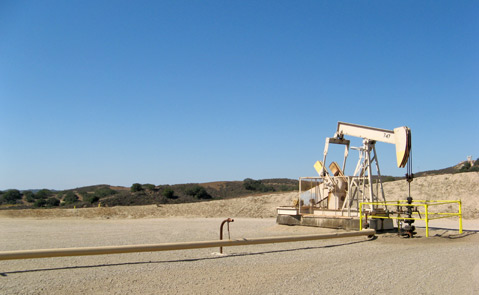Oil Wellian
Does Drilling Project Spell a Bright or Dark Future?

Oil and water don’t play well together. But in Santa Barbara County, steam could be a different story. When, in 2009, Santa Maria Energy proposed drilling 110 new oil wells on its property south of Orcutt — the wells, like the 26 pilot wells before them, would employ an extraction technique known as cyclic steam injection — the company knew it would be contending with California’s recently implemented Global Warming Solutions Act (AB 32), which aims to reduce the state’s greenhouse-gas emissions to 1990 levels by 2020. Earlier this year, in applying for permits from the county, Santa Maria Energy agreed to make its threshold nearly twice as strict as the state’s — a 29 percent threshold of emissions, versus the state’s prescribed 16 percent. And in September, the county’s Planning Commission approved that 29 percent barometer, paving the way for the project.
But where the project’s proponents envision jobs and tax revenue, its opponents see environmental catastrophe. The most vocal critics, a collection of organizations represented by the Environmental Defense Center (EDC), have long said that Santa Maria Energy could negate the emissions entirely or, at the very least, adhere to the only measure used by the county since AB 32 — an emissions limit of 10,000 metric tons per year. But when the EDC’s push for a tougher threshold didn’t garner enough support from planning commissioners in September, the organization appealed the approval to the Board of Supervisors, who are set to vote on it this Tuesday. How they’ll vote is anyone’s guess — the commissioners’ 3-2 vote followed hours of wrangling — but whatever action they take on the appeal could establish a precedent for the county’s future energy projects.
“It’s the policy question of, what are we going to set the threshold at and what is the mitigation going to be?” said EDC attorney Nathan Alley. “Is the county going to be consistent with its own rules and those of neighboring jurisdictions or attempt to do the minimum?” Located on the Orcutt Oil Field, behind a vineyard and surrounded by farmland, the 32-acre site is already home to Santa Maria Energy’s Monterey Shale drilling operations. It is also home to the abandoned town of Bicknell, where oil workers lived in the early 1900s.
The 29 percent threshold for the 110 wells would bring their projected greenhouse-gas emissions down from 70,000 metric tons a year to just under 50,000; any amount over that will require Santa Maria Energy to employ on-site mitigation measures or buy carbon credits. The project also comes with two steam generators, a crude-oil pipeline, and a water pipeline that will transfer nearly 300,000 gallons of softened recycled wastewater daily from the Laguna County Sanitation District for the steam generators, the chief emissions culprits. The oil — an estimated 3,300 barrels a day — will be extracted by injecting the oil-rich diatomaceous earth with steam, which thins the oil and allows it to flow. (It’s not fracking, Santa Maria Energy officials say, because it doesn’t break the rock.)
In its appeal, the EDC claims it would only cost Santa Maria Energy about $1 per barrel — or about $900,000 a year — to achieve zero emissions, a claim that Bob Poole, the company’s public and government affairs manager, said would unfairly cut into profits. If not zero, the EDC argues, the project should at least be held to 10,000 metric tons per year, a standard that the county hasn’t officially adopted but has, like San Luis Obispo County and the Bay Area Air Quality Management District, used for projects since the passage of AB 32. The 29 percent figure, Alley said, “came out of thin air” and is based on a Chula Vista case involving a Target store. “Once they’ve used it, what’s to keep them from using it again?” Alley said. “It would create momentum.”
Pool said he is “optimistic” the appeal will be denied, and that, to assuage any worries, the company has “contingency plan upon contingency plan,” including berms around the facility, a live monitoring system, and environmental protections. What people shouldn’t worry about, Poole said, are the economic benefits: 50-75 permanent jobs and nearly $470,000 generated every day. Fifth District Supervisor Steve Lavagnino said he is interested in those economic benefits — especially considering the unemployment in North County — but is also concerned about safety. “I know that there are responsible people on both sides of this issue,” he said.
Alley said that although he appreciated Santa Maria Energy’s backup plans, he said they still suggest potential problems. While oil seeping can occur naturally, Alley said he was concerned that Pacific Coast Energy Company, also with a facility in Orcutt Oil Field, recently had to install seep cans — the permits for which the supervisors will also be looking at on Tuesday — to control the oil rising to the surface. “You’re waiting for it to happen, and then waiting to find it, and then trying to correct it,” he said. “It’s been somewhat effective in containing the seeps. It’d be a lot better not to have the seeps.”



